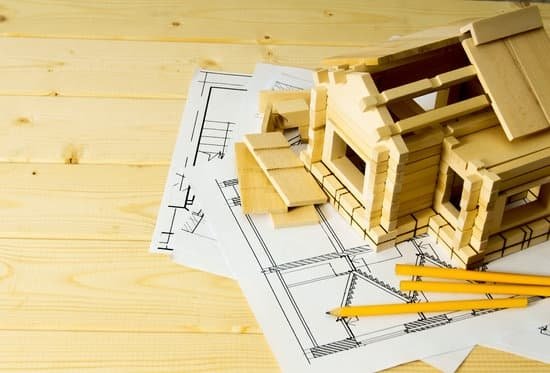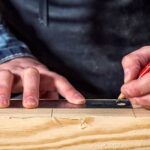Introduction to Epoxy Woodworking Projects
Epoxy woodworking projects involve using epoxy resins to create a hard and durable bond between two surfaces, typically wood. This makes it an effective way of bonding different types of materials together such as metal, stone, glass and even fabrics. The resulting bond is strong, waterproof and heat resistant making it ideal for many uses such as creating furniture or crafts.
The benefits of using epoxy to complete woodworking projects are numerous. Besides being extremely durable and long-lasting, epoxy can be used in a variety of ways which allow for a wide range of design options. It is flexible enough to adhere to irregular shapes or curved surfaces, is highly adhesive even on wet surfaces and can be sanded or painted.
Epoxy projects differ from other types of woodworking projects in several ways. The first is that epoxy requires careful preparation before the application process begins in order for it to bond properly with the surfaces being joined together. Additionally, the use of protective clothing and safety equipment is strongly recommended when working with epoxy due to its hazardous nature. Finally, epoxies harden over time so any small gaps or imperfections will need to be dealt with during the initial stages as any mistake may become permanent once the project has been completed.
Types of Epoxy Woodworking Projects
Epoxy woodworking projects can involve anything from creating small decorative items to building furniture. Examples of commonly undertaken epoxy woodworking projects include creating custom tables, chairs, and other home furnishings; constructing vases or planters; making cutting boards or wooden utensils; restoring antique pieces of furniture; creating custom art installations and sculptures; and many more interesting and creative uses.
Working with epoxy resin provides a number of unique benefits over traditional woodworking techniques. One primary benefit is that epoxy has extreme durability and strength, which makes it perfect for items that will encounter heavy use like tables, chairs, cutting boards, and other kitchenware. Epoxy is also highly versatile ” it can be used to fill gaps in any size or shape uneven surfaces, form molds for unique shapes, bind different materials together, coat surfaces lightly with an even finish, produce waterproof objects to hold liquid or repel water from outdoor settings, and create unique textures. Additionally epoxy is incredibly lightweight in comparison to its strength ” an added bonus for larger projects like art installations and sculptures!
Planning Your Epoxy Woodworking Project
Planning an epoxy woodworking project involves a few important steps. First, you’ll need to consider the scale and complexity of your project to determine the materials that may be needed. Research the type of timber best suited for your project, as well as any special tools or other equipment that may be necessary. Consider both safety and budgetary measures when choosing a suitable location for your project — make sure it’s in a place with good ventilation and away from pets and children.
Next, preparation is key when it comes to epoxy woodworking. Properly prepare the wood surface by sanding it down to a smooth finish and wiping away any residue that may interfere with the adhesion of the epoxy resin. If staining or painting is desired, do so before applying the epoxy resin. Be aware that if applying finishes after curing, they should always go onto clean resin surface free of dust to ensure proper adhesion.
Finally, take care throughout each step of the process to ensure success with your epoxy woodworking project – consult instructions provided on all products used; wear protective garments such as goggles and gloves; properly measure during mixing for accurate consistency; apply multiple thin coats rather than one thick coat; avoid excess heat exposure; allow sufficient time for appropriate curing prior to sanding or further treatments; test pressure, temperature resistance levels before use; keep stored material labels when closing containers not in use; dispose of responsibly any hazardous waste or byproducts created from the process. Following these steps will increase your chances of completing an exceptional epoxy woodworking project you can be proud of!
Getting Started with Epoxy Woodworking
Epoxy Woodworking Projects – Many people are finding that epoxy can add a unique depth of beauty and durability to their woodworking projects. Before attempting a DIY project with epoxy, however, it’s important to understand some basics.
Mixing: Epoxy comes in two parts that must be mixed together. Be precise with measurements and mix well to ensure the epoxy will later adhere properly to the wood. Carefully follow instructions on the packaging as ratios can vary widely from one manufacturer to another.
Safety Precautions: As with any type of do-it-yourself project, safety is paramount when using epoxy products. Wear protective gear such as goggles and gloves and make sure there is adequate ventilation in the working space. In addition, read over safety guidelines prior to mixing or applying epoxy so as not to cause any adverse effects through improper handling or use.
Cleaning: Prepare surfaces before applying epoxy by cleaning off dust and debris with a cloth or vacuum cleaner. Make sure dry totally ” no moisture should be present surrounding the area of application when mixing or using epoxy products ” otherwise, the bond between the surface and product may not stick properly.
Hardening: Epoxies can take anywhere from 24-72 hours (or more) for them to become completely hardened, depending on climate and temperature levels in your working space/area as well as other factors like humidity levels; so plan carefully for your project’s timeline accordingly if you need it completed within a specific amount of time.
Troubleshooting: At times issues may arise when using epoxies such as bubbling up during curing process due to trapped air pockets; this may weaken structural strength of the piece so troubleshoot these types of issues accordingly by properly venting cured areas (i.e., creating ventilation holes by drilling or hammering appropriately if necessary).
Working Around Issues: If an issue arises that cannot be fixed, try brainstorming alternatives and workarounds such as pouring another layer over problem areas after they have been sanded down and cleaned again ” just make sure all gaps are free of dust prior application otherwise you will see bubbles form during curing process if there is dirt or dust present on surface being coated in resin/epoxy material(s).
Examples of Completed Epoxy Woodworking Projects
Example 1 – Epoxy Resin River Table: An epoxy woodworking project to create a unique and one-of-a-kind river table involves carefully measuring and cutting out a 2×6 or 2×12 or other species of wood into four pieces. Before being glued up together they should be sanded down and the edges rounded off if desired to help shape the natural contours of the table top. Use thick layers of art grade epoxy resin to fill in any gaps or ridges left when clamping together. The layers need to cure so either allow time between each pour or warm them afterwards with a hairdryer to speed up the hardening process. Once everything is cured, finish off by sanding it down smooth, staining, varnishing, and waxing for protection.
Example 2 – DIY Custom Wall Coat Rack: A custom wall coat rack is simple but effective and can be designed in whatever style you choose. The frame can be cut from two-by-four lumber in different types of shapes ” such as an oval, half moon, or rectangular designs ” depending on your preferences. Stain each frame piece before assembling them together with screws and then fill any remaining gaps using epoxy resin for extra strength that will hold up heavier coats over time. For added visual interest pick contrasting hues between the frame and racks which are cut from branches found naturally outdoors ” a drill can also come in handy here if needed to make several wooden pegs for hanging coats/scarves on them too. Lastly, mount onto a wall surface in any suitable location you prefer!
Conclusion
Epoxy woodworking projects offer an easy and economical way to add unique designs and features to wooden items. By bonding the epoxy resin and hardener solutions to the surface of the wood, you can create a durable, waterproof and decorative finish in a fraction of the time. Epoxy projects allow you to achieve flawless finishes that last for years while being both aesthetically pleasing and highly functional. The options available through epoxy are virtually limitless and can be used on furniture, home décor, wall art and more.
The benefits offered by epoxy woodworking projects are numerous. Epoxy can be used to coat wood surfaces with a protective layer that improves its longevity, protect it from elements such as moisture damage, or provide an easily customizable design element without having to use traditional staining or painting methods. Additionally, applying epoxy is typically faster than traditional methods, making quick-turnaround projects manageable with minimal effort and stress.
For those interested in learning more about epoxy woodworking projects, additional resources are available online from sources like Instructables (https://www.instructables.com/id/Epoxy-Woodworking/) or bookstores like Amazon (https://www.amazon.com/s?k=epoxy+woodworking&rh=n%3A283155). Additionally, attending local meetups where craftspeople gather to share tips and best practices can help quickly gain access to valuable advice from professionals who have used the technique for many years.

Hi everyone! I’m a woodworker and blogger, and this is my woodworking blog. In my blog, I share tips and tricks for woodworkers of all skill levels, as well as project ideas that you can try yourself.





